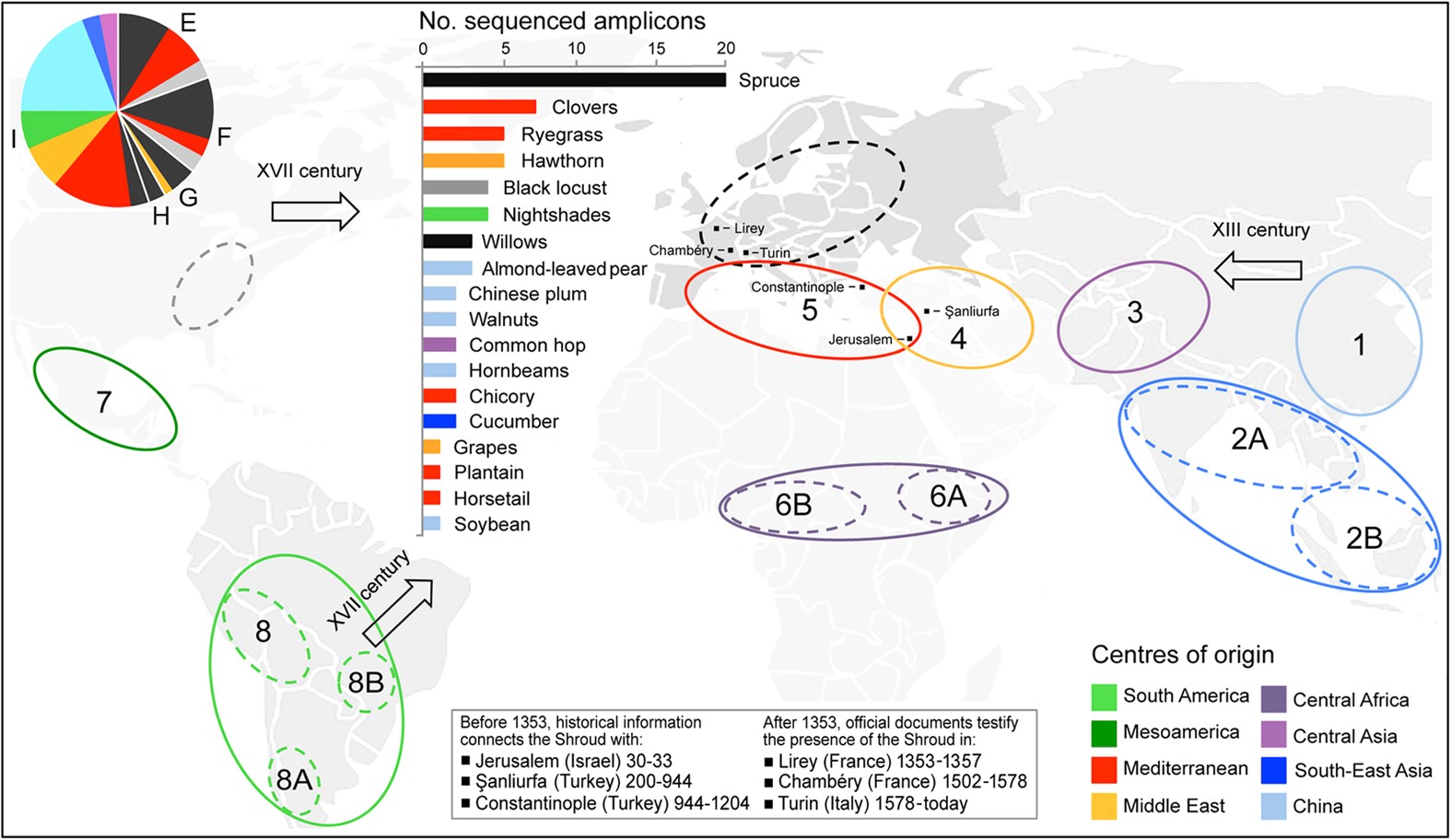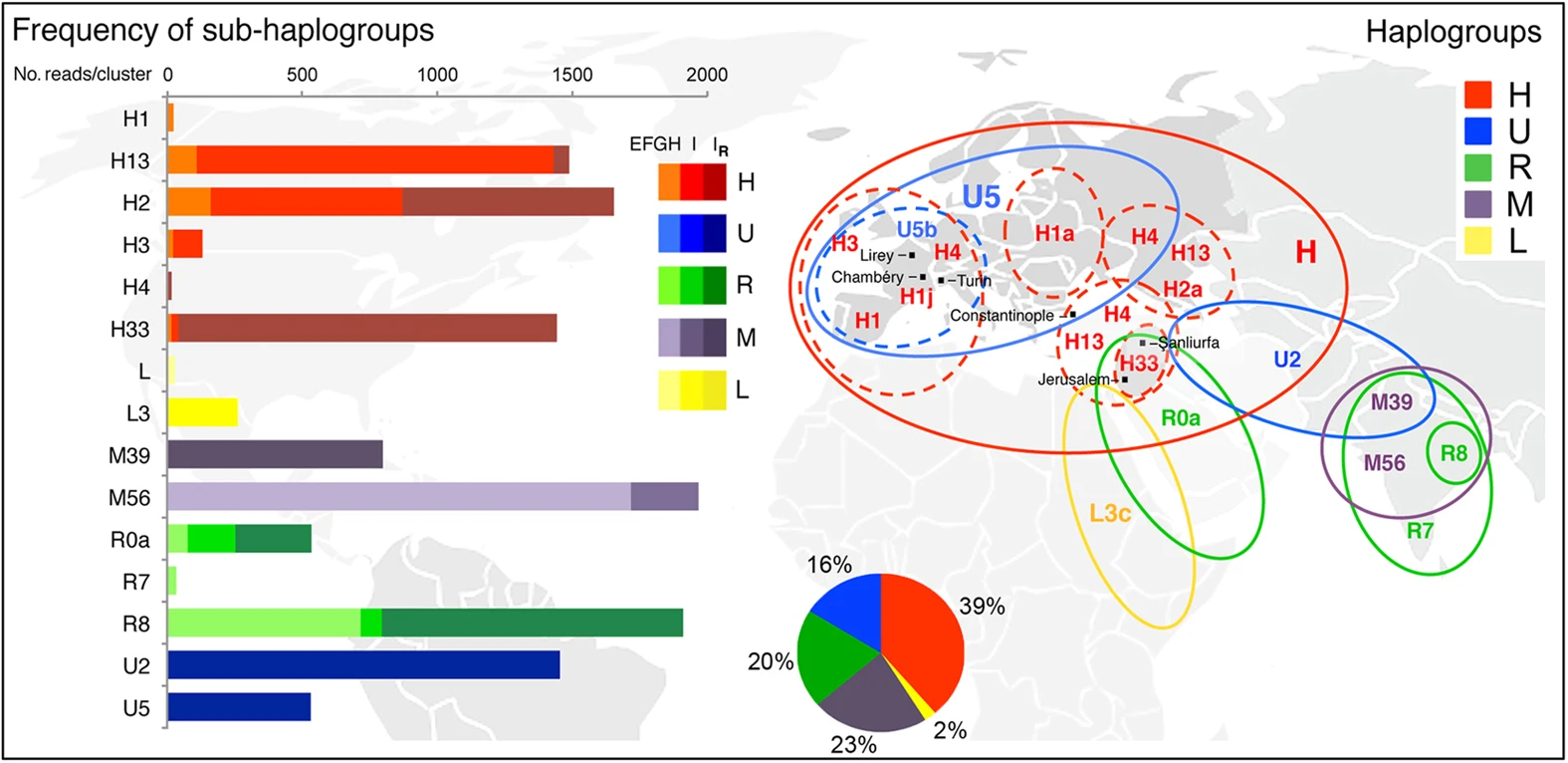DNA analysis has been done on dust particles collected from the TS. It is able to identify plant and human particles and their estimated geographic origin.
Several plant taxa native to the Mediterranean area were identified as well as species with a primary center of origin in Asia, the Middle East or the Americas but introduced in a historical interval later than the Medieval period. Regarding human mitogenome lineages, our analyses detected sequences from multiple subjects of different ethnic origins, which clustered into a number of Western Eurasian haplogroups, including some known to be typical of Western Europe, the Near East, the Arabian Peninsula and the Indian sub-continent.
https://www.nature.com/articles/srep14484
They studied the dust particles collected in 1978 and 1988.
In this study, we performed DNA analyses to define the biological sources of the dust particles (pollen grains, cell debris and other minuscule organic specimens, such as plant-derived fibers and blood-like clots) vacuum-collected in 1978 and 1988 in distinct TS filters, corresponding to the face, hands, glutei and feet of the body image6,13 and the lateral edge, which was used for radiocarbon dating8. To identify plant taxonomic entities and human genetic lineages, universal plant DNA sequences, including nuclear rDNA intergenic transcribed spacers (ITS) and chloroplast DNA (cpDNA) barcodes and human mitochondrial DNA (mtDNA) target regions were amplified and sequenced.
https://www.nature.com/articles/srep14484
Plant particles were traced to various parts of the world.
The land plant species include herbaceous weeds and crops, woody trees and shrubs; some are native to Mediterranean countries and are widespread in Central Europe, North Africa and the Middle East, whereas others have a center of origin in Eastern Asia and the Americas and hence they were not yet present into Europe during the Medieval period

Human DNA found correspond with several haplogroups. Based on the frequency of DNA found, most center in the Middle East region, which implies it was touched the most by those from the Middle East.

The DNA analysis does not rule a Medieval origin, but is compatible with the TS being a shroud from the first century.
Such diversity does not exclude a Medieval origin in Europe but it would be also compatible with the historic path followed by the Turin Shroud during its presumed journey from the Near East.
https://www.nature.com/articles/srep14484
Though DNA analysis has been done on the shroud of the particles vacuumed from the shroud, it is not conclusive evidence to discount either a Medieval French origin or a 1st century Jerusalem origin; however, it does favor the preponderance of people touching the shroud were from the Middle East.
https://debatingchristianity.com/forum/viewtopic.php?p=1120453#p1120453
